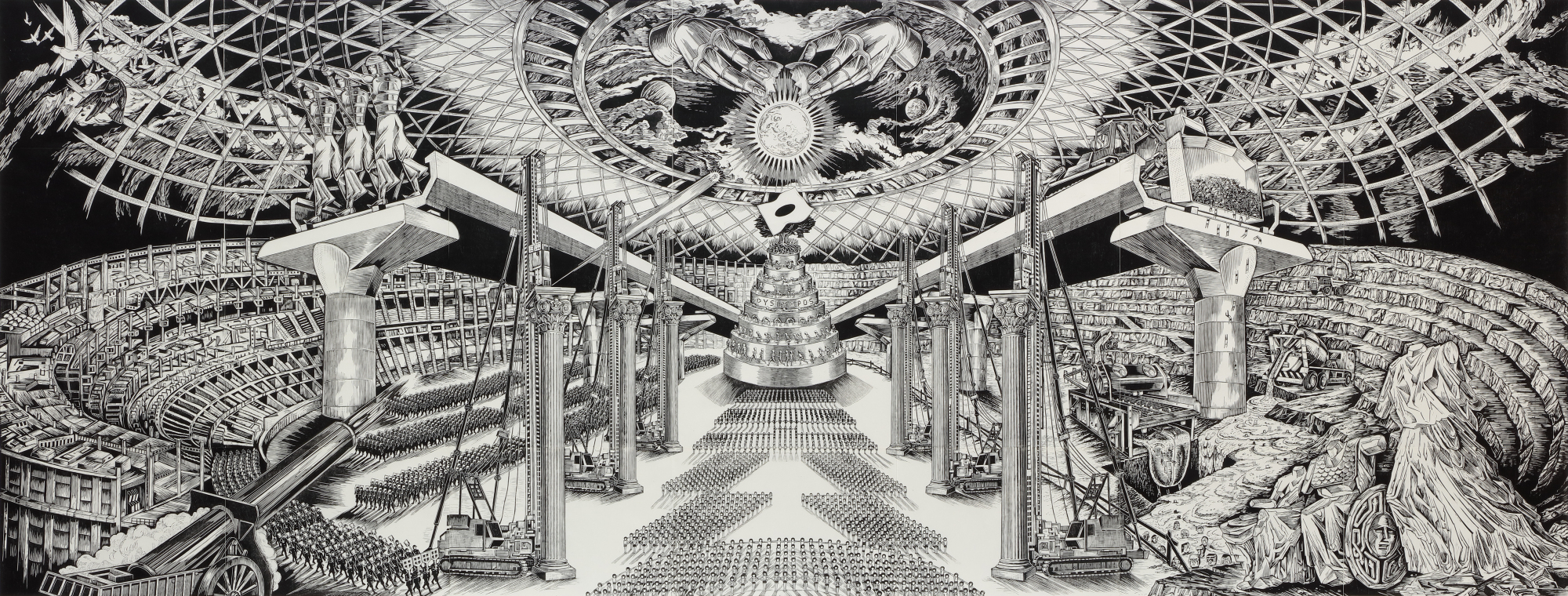The number of young Japanese artists today who engage in political dissent but also have exposure in major festivals and museums, can be counted on the fingers of one hand. In Japan you can count up to 10, as opposed to Europe or the U.S., where you'd only get to five — either way, that's pretty slim pickings.
Sachiko Kazama is a good candidate for being the raised middle finger in this small number of artists. Her epic black-and-white compositions in the jagged style of early to mid-20th-century German expressionist woodcut prints scratch at the history of Japanese fascism, refusing to let it hide behind prevarication and bad text books. In her solo show at the Gallery αM, Kazama also gamely takes a jab at the hubris of Kenzo Tange's architecture and the vulgarity of the Olympics.
The centerpiece of Kazama's "Plans for Tokyo 2019" exhibition, is a 6.4- by 2.4-meter woodcut print "Dyslympics 2680." It's an orgy of propagandistic iconography that imagines the opening ceremony of Tokyo 2020 (which would be 2680 if you are using the Japanese imperial calendar system), and is as visually satisfying as a still from Leni Riefenstahl's 1938 "Olympia," or a double-page spread from Japan's wartime Nippon magazine.

















With your current subscription plan you can comment on stories. However, before writing your first comment, please create a display name in the Profile section of your subscriber account page.